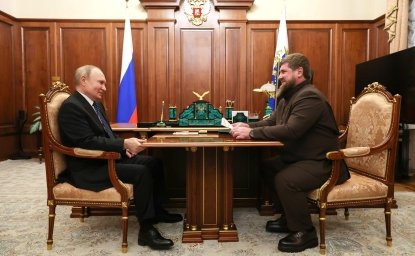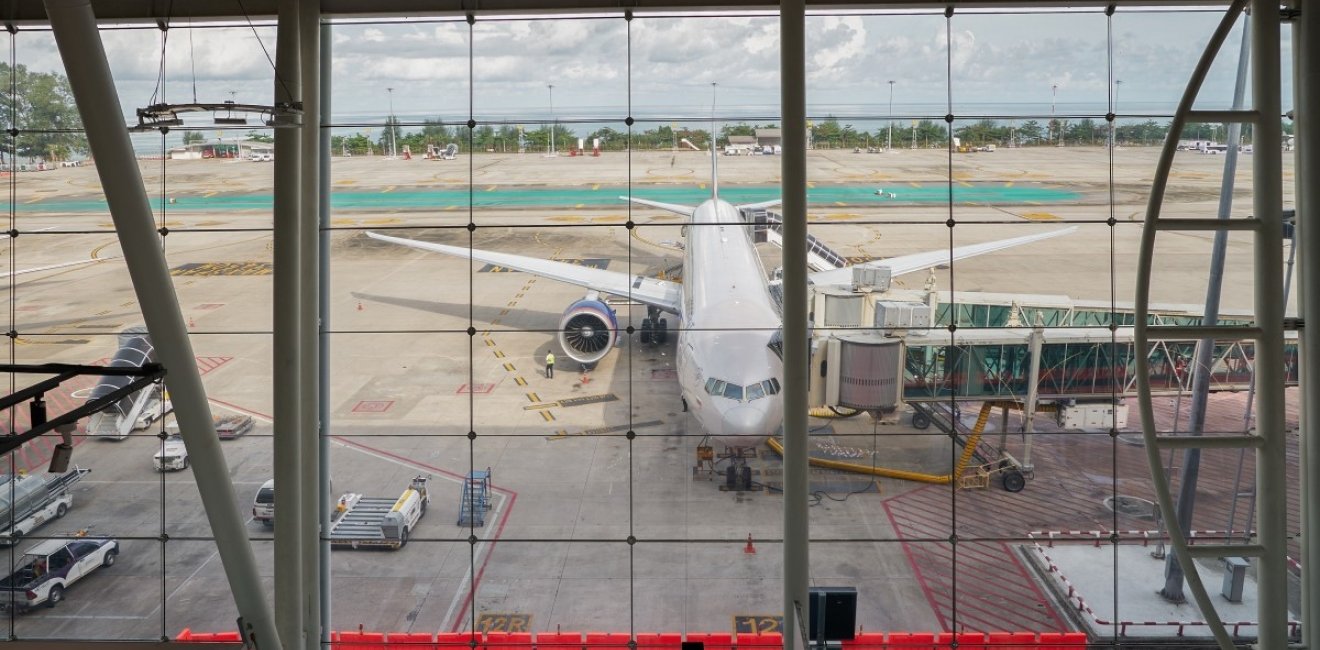
A blog of the Kennan Institute
Among the many sectors immediately affected by Russia’s full-scale invasion of Ukraine in February 2022 was civil aviation. Flights to Western destinations were critically reduced and foreign leasing companies demanded that Russian airlines return their leased planes, which turned out to be almost their entire fleet.
For Russia, civil aviation is a strategic industry. Many far-flung territories, including those where Russia’s resources are extracted, are accessible only by air. If the sanctions were working as intended, Russia would have been severely affected. But Russia’s government officials and airlines’ management, with the West’s silence, found ways to save the industry. It is not thriving—it underwent a structural change—but it has survived and is doing relatively well. The price of the turnaround is that civil aviation is now largely and increasingly a state-dependent industry.
Industry Reliance on Western-Origin Planes Becomes a Sore Point
After the annexation of Crimea and the downing of Malaysia Airlines Flight 370 over Ukraine in March 2014, virtually all key sectors of the Russian economy, including the aircraft industry, came under pressure from Western sanctions. Air transportation turned out to be almost the only industry that was practically unaffected by the sanctions. Russian carriers continued to fly international routes, while European and American airlines retained their routes over Russia (trans-Siberian and cross-polar). Russian airlines continued to operate with airplanes leased from Western companies. Aeroflot received seven new-generation Airbus A350 airplanes after 2014. This arrangement was apparently regarded favorably by both Russia and Western countries. It seemed that no matter what happened, the industry would be able to avoid sanctions pressure.
Historically, Russian airlines have preferred Western airplanes since the Russian aviation industry did not produce the required number of passenger airplanes. As of February 2022, more than 80 percent of the fleet of the twenty largest Russian airlines (accounting for 97 percent of all passenger traffic) consisted of foreign-origin aircraft.
According to Transportation Minister Vitaly Savelyev, the Western leasing companies demanded that Russia return 515 planes; he called this demand a “political decision.” The demand to return the planes immediately jeopardized the existence of Russia’s entire civil aviation industry. If Russia were to return all these planes, Russian carriers would have nothing to fly with.
In this way, the availability of airplanes moved overnight from the economic realm to the political realm.
Response to Sanctions
Russia’s airlines, having become hostage to the political situation, could not deal with the leasing issue on their own. The state decided everything for them, legislating a ban on the export of foreign-owned, leased aircraft outside Russia. The decision to “take someone else's property” (as Savelyev put it) was reached quickly and put through the Kremlin’s spin machine. In Kremlin pronouncements, it was not the “special operation” in Ukraine but the sanctions that became the starting point and raison d’être for further actions by the Russian government.
Ultimately, Putin accused European and American companies of deception and called the decision to retain foreign-owned planes that the lessors wanted back a correct one.
Industry Survival under the Aegis of the State
Although the years 2022 and 2023 caused a shock to the Russian aviation industry, it managed to survive, thanks to strong financial injections from the government and the resources of the market players themselves. The answer to the most common question—How do Russian airlines continue to fly after two years under sanctions?—is simple: because they have a long history of participating in the international aviation market. Over many years of cooperation with Western partners, Russian carriers have adopted skills, procedures, technologies, and standards from other countries, cementing them as benchmarks.
The main message from Russian officials is that Western sanctions have not achieved the goal they were aiming for. Neither the closure of airspace nor the ban on the operation of foreign aircraft has destroyed Russian civil aviation. But the Russian air transportation market has become even more dependent on the state than ever before.
It is worth explaining why the state needs aviation. The answer is simple: in the world’s largest country by area, the authorities need prompt access to strategically important facilities and resources, in particular the ample deposits of oil, gas, coal, diamonds, and other metals and the metallurgical, machine-building, oil refining, and other industrial plants scattered across the country. Russia’s natural resources account for around 60 percent of Russia’s GDP and, in the decade before the war, formed a strong basis for the average 27 percent of workers employed in industry.
Aviation also provides access to Russia’s more than 60,000 kilometers of borders with other countries and to the hinterlands; where it is estimated more than 60 percent of the territory has no other means of access. Connectivity therefore has always been of national importance.
With this in mind, it is clear why the state has spent more than 650 billion rubles in two years to support the air transport industry, likely the most the state has ever spent on aviation. In 2022, a significant part of the allocated funds went toward subsidies for domestic routes, which did increase passenger traffic. Another part went toward compensation for the cost of kerosene and other war-related expenses, in particular the closure of eleven southern airports after February 24, the day of Russia’s invasion of Ukraine. At the same time, the state sharply increased its share in Aeroflot's capital, from 57 percent to almost 74 percent.
In 2023 the government allocated considerably less money for subsidies and much more to buy leased Western-origin aircraft. Although the sanctions prohibited such transactions, resourceful Russian lawyers found a loophole and turned the buyout into an insurance settlement.
By the end of 2023, Russia had bought 150 airplanes out of more than 500 required to be returned. Aeroflot accounted for more than half of the purchased planes. Negotiations on further “insurance settlement” of the situation around the leased aircraft are reportedly ongoing.
Aeroflot, the main civil-aviation market player, including its subsidiaries Rossiya Airlines and the low-cost carrier Pobeda, is now fully subordinated to the state. The other approximately 100 carriers on the list, with a different form of ownership (Siberia, Ural Airlines, UTair), had no other options either. Having weathered many other crises in their almost thirty years of existence, they too were forced to submit to the state.
The Future of the Russian Aviation Industry in the Global System
Russian aviation, disconnected from suppliers and from experience and knowledge transfer networks, will likely survive, but increasingly as a stand-alone operation. Russia will have to say goodbye to its rich Soviet aviation heritage in the form of an established network of international routes, airport slots, trans-Siberian royalties, and high status in industry organizations.
Russia, commanding a large geography in the Northern Hemisphere, cannot be completely cut out of the global transportation system. But it is impossible to imagine today when and under what circumstances international cooperation might resume.
The opinions expressed in this article are those solely of the author and do not reflect the views of the Kennan Institute.
Author


Kennan Institute
The Kennan Institute is the premier US center for advanced research on Eurasia and the oldest and largest regional program at the Woodrow Wilson International Center for Scholars. The Kennan Institute is committed to improving American understanding of Russia, Ukraine, Central Asia, the South Caucasus, and the surrounding region through research and exchange. Read more

Explore More in The Russia File
Browse The Russia File
Chechnya as a Model of Modern Russia

Russia’s Indigenous Communities and the War in Ukraine

Gas and Power in a Changing US–Russia Relationship

